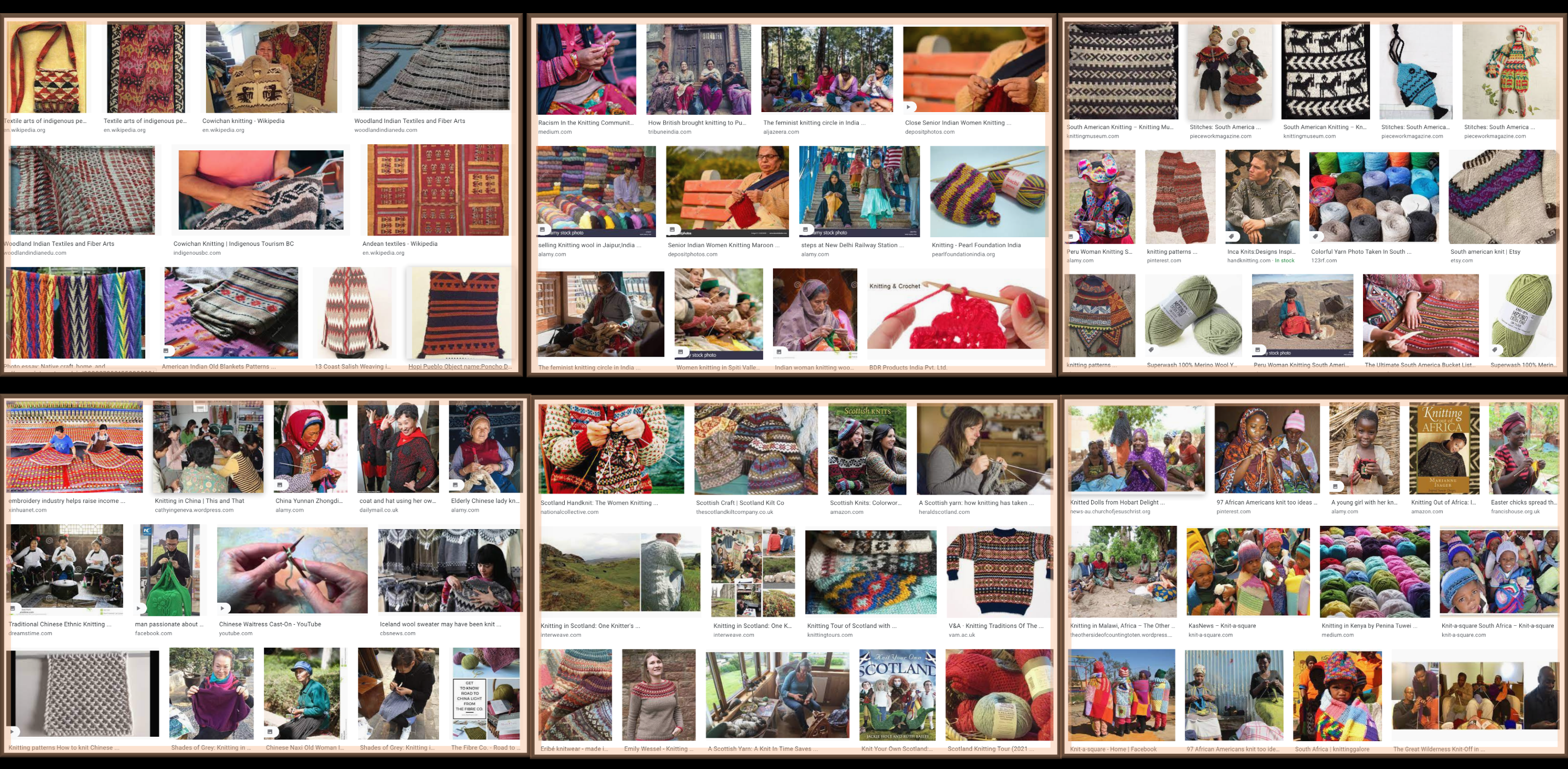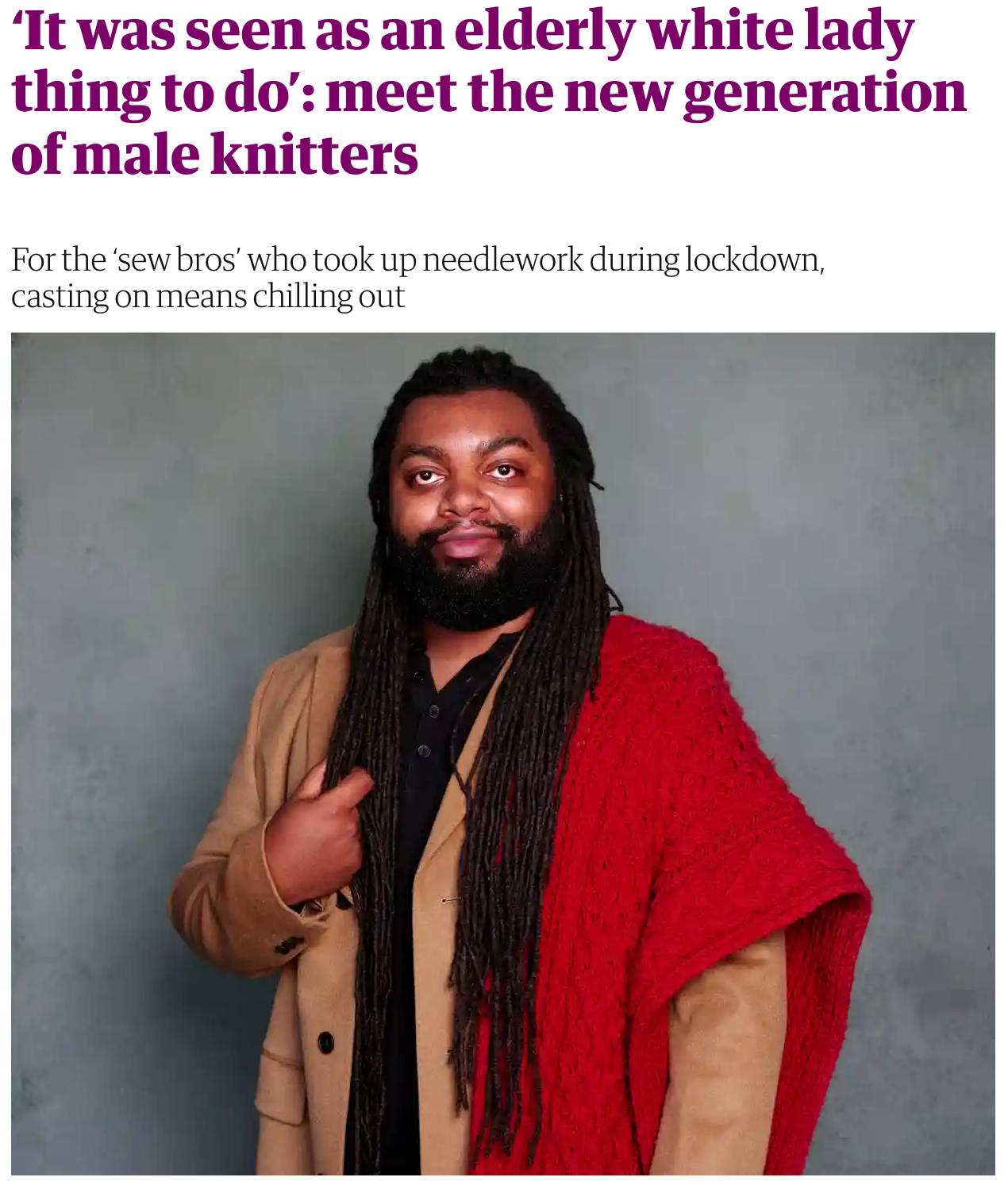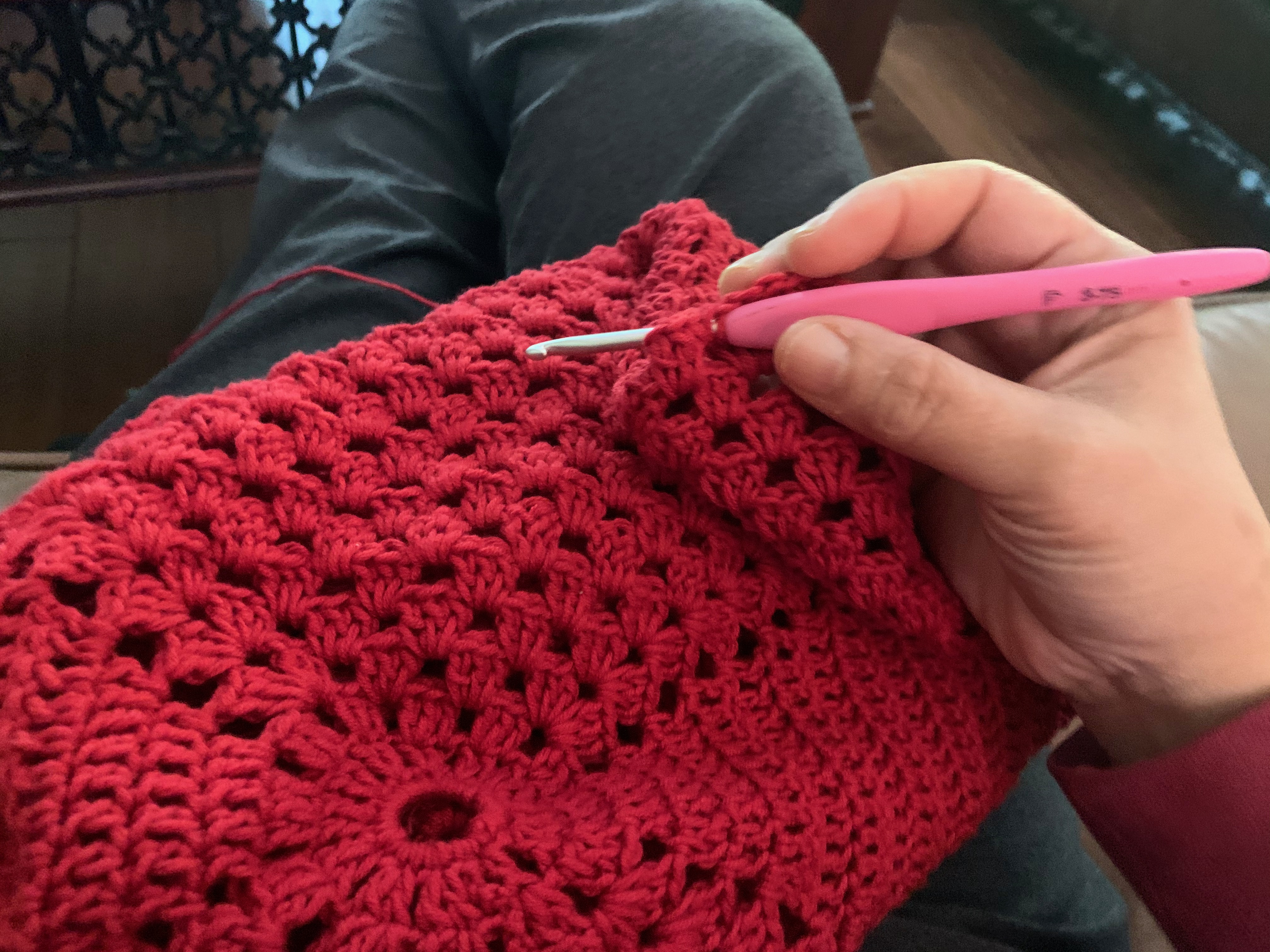 Those who inhabit the world of knitting and crocheting will recognize that syntax in the title. They will likely also recognize how to enact, with [yarn and (knitting needles or crochet hooks)], the sequences, repeats and branches —much like computer algorithms—that yield amazing woven craft artifacts from items of clothing (scarves, shawls, hats, socks, gloves, mitts, tops, ponchos, sweaters, cardigans, shrugs, vests, skirts, bikinis, …) to countless diverse, household objects and everyday use items (mats, coasters, afghans, throws, dishcloths, totes, handbags, pen stands, doilies,…).
Those who inhabit the world of knitting and crocheting will recognize that syntax in the title. They will likely also recognize how to enact, with [yarn and (knitting needles or crochet hooks)], the sequences, repeats and branches —much like computer algorithms—that yield amazing woven craft artifacts from items of clothing (scarves, shawls, hats, socks, gloves, mitts, tops, ponchos, sweaters, cardigans, shrugs, vests, skirts, bikinis, …) to countless diverse, household objects and everyday use items (mats, coasters, afghans, throws, dishcloths, totes, handbags, pen stands, doilies,…).
Knitting/crocheting in world cultures
As it turns out, knitting, crocheting, and other forms of weaving are part of every culture in every corner of the world. Knitting alone has a long and rich history among various regions/peoples of the world—from Africa to Asia and India, Europe to South and Indigenous American. (Click on the collage of images below to see snapshots of Google Image search results I took using keywords combining “knitting” and “Africa”, “India”, “China”, “Native American”, “Scotland”, “South America”.)
 Knitting has a history as old as civilization itself. Web searches suggest that it is believed to have originated in Egypt between 3rd and 5th Century and traveled from there to Europe and thence onward to other parts of the world. Much lesser is known about crochet’s origin story, but the general belief is it is not as old as knitting. It is a hugely popular hobby today, perhaps just as or more popular than knitting.
Knitting has a history as old as civilization itself. Web searches suggest that it is believed to have originated in Egypt between 3rd and 5th Century and traveled from there to Europe and thence onward to other parts of the world. Much lesser is known about crochet’s origin story, but the general belief is it is not as old as knitting. It is a hugely popular hobby today, perhaps just as or more popular than knitting.
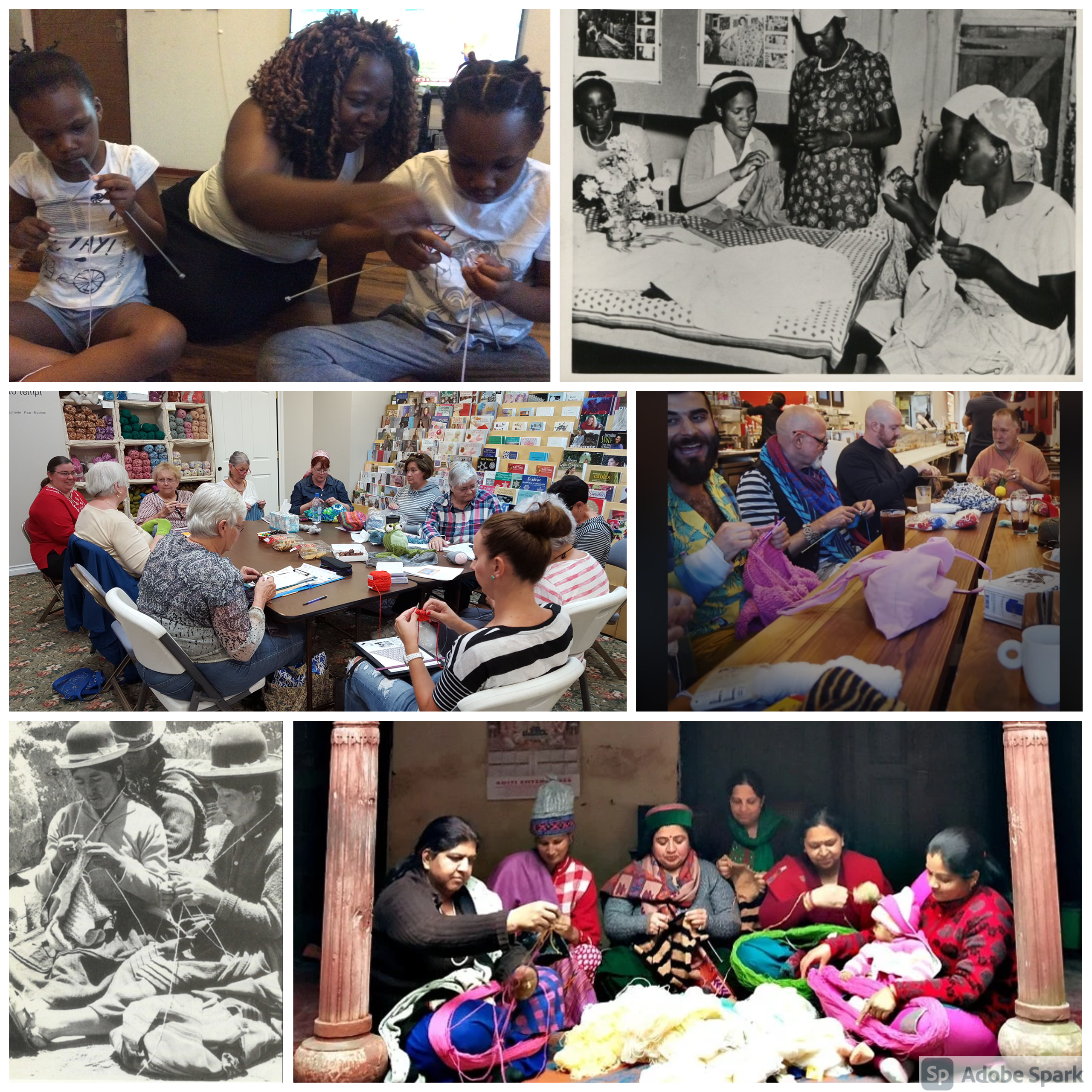 What’s also wonderful about knitting (especially) and crocheting is that, over the centuries, there has been a strong social element associated with them. They are also inter-generational activities—with children joining their mothers and grandmothers to knit together. Thousands of communities, guilds and clubs that exist, and are actively being created even today, bear testimony to the strength of the social in knitting/crocheting. In fact, Youtube is full of videos from popular craft channels that share not only patterns, but are dedicated to comparing kinds of yarn and even yarn unboxing. Live streaming conversations about crocheting and knitting has become a thing, especially during the pandemic.
What’s also wonderful about knitting (especially) and crocheting is that, over the centuries, there has been a strong social element associated with them. They are also inter-generational activities—with children joining their mothers and grandmothers to knit together. Thousands of communities, guilds and clubs that exist, and are actively being created even today, bear testimony to the strength of the social in knitting/crocheting. In fact, Youtube is full of videos from popular craft channels that share not only patterns, but are dedicated to comparing kinds of yarn and even yarn unboxing. Live streaming conversations about crocheting and knitting has become a thing, especially during the pandemic.
Takeaway #1: Parents/Educators, knitting and crocheting is not only a wonderful hobby, but also a great way to connect to communities and also one’s older generations and culture. Regardless of ethnicity, there is bound to be a weaving and/or knitting craft history and culture every child can connect to.
Knitting/Crocheting is the new ‘Om’ and it’s not just for girls!
 Hundreds of articles have been writing about the calming and even healing benefits of knitting and crocheting. Research has shown how these hobbies help reduce anxiety, stress, alleviate chronic pain and depression, and even slow dementia. “A 2007 study conducted by Harvard Medical School’s Mind and Body Institute, found that knitting lowers heart rate, by an average of 11 beats per minute, and induces an “enhanced state of calm,” similar to that of yoga.”; “a 2011 study conducted by the Mayo Clinic of over 70-year-olds found that those who knit had a “diminished chance of developing mild cognitive impairment and memory loss.” Knitting is being used by scientists working with patients struggling with trauma and PTSD.
Hundreds of articles have been writing about the calming and even healing benefits of knitting and crocheting. Research has shown how these hobbies help reduce anxiety, stress, alleviate chronic pain and depression, and even slow dementia. “A 2007 study conducted by Harvard Medical School’s Mind and Body Institute, found that knitting lowers heart rate, by an average of 11 beats per minute, and induces an “enhanced state of calm,” similar to that of yoga.”; “a 2011 study conducted by the Mayo Clinic of over 70-year-olds found that those who knit had a “diminished chance of developing mild cognitive impairment and memory loss.” Knitting is being used by scientists working with patients struggling with trauma and PTSD.
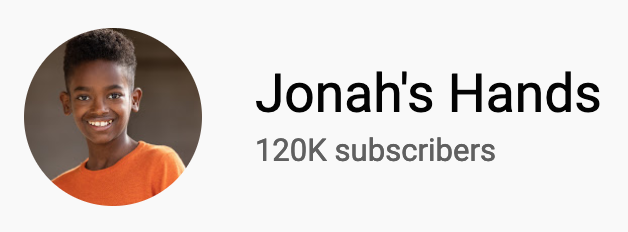 Over the centuries, men have been avid knitters. In fact the earliest knitting guilds in Europe in the middle ages were for men only. There are many active boys and men with active Youtube channels dedicated to knitting and crocheting. Jonah’s hands is a very popular Youtube channel, as is The Crochet Crowd – a community crochet channel run by Michael Sellick. With the resurgence of knitting and crochet recent days, there are a growing number of article on how men are taking the plunge into what has been seen in recent years as a “old white lady” hobby.I really do love the idea of “sew bros” 😀
Over the centuries, men have been avid knitters. In fact the earliest knitting guilds in Europe in the middle ages were for men only. There are many active boys and men with active Youtube channels dedicated to knitting and crocheting. Jonah’s hands is a very popular Youtube channel, as is The Crochet Crowd – a community crochet channel run by Michael Sellick. With the resurgence of knitting and crochet recent days, there are a growing number of article on how men are taking the plunge into what has been seen in recent years as a “old white lady” hobby.I really do love the idea of “sew bros” 😀
Takeaway #2: Promote well-being and mindfulness among girls AND boys in your classroom through knitting/crocheting; these crafts not only provide the joy borne out of creating something, but also help lower stress levels (especially among tweens and teens).
My journey into knitting/crocheting
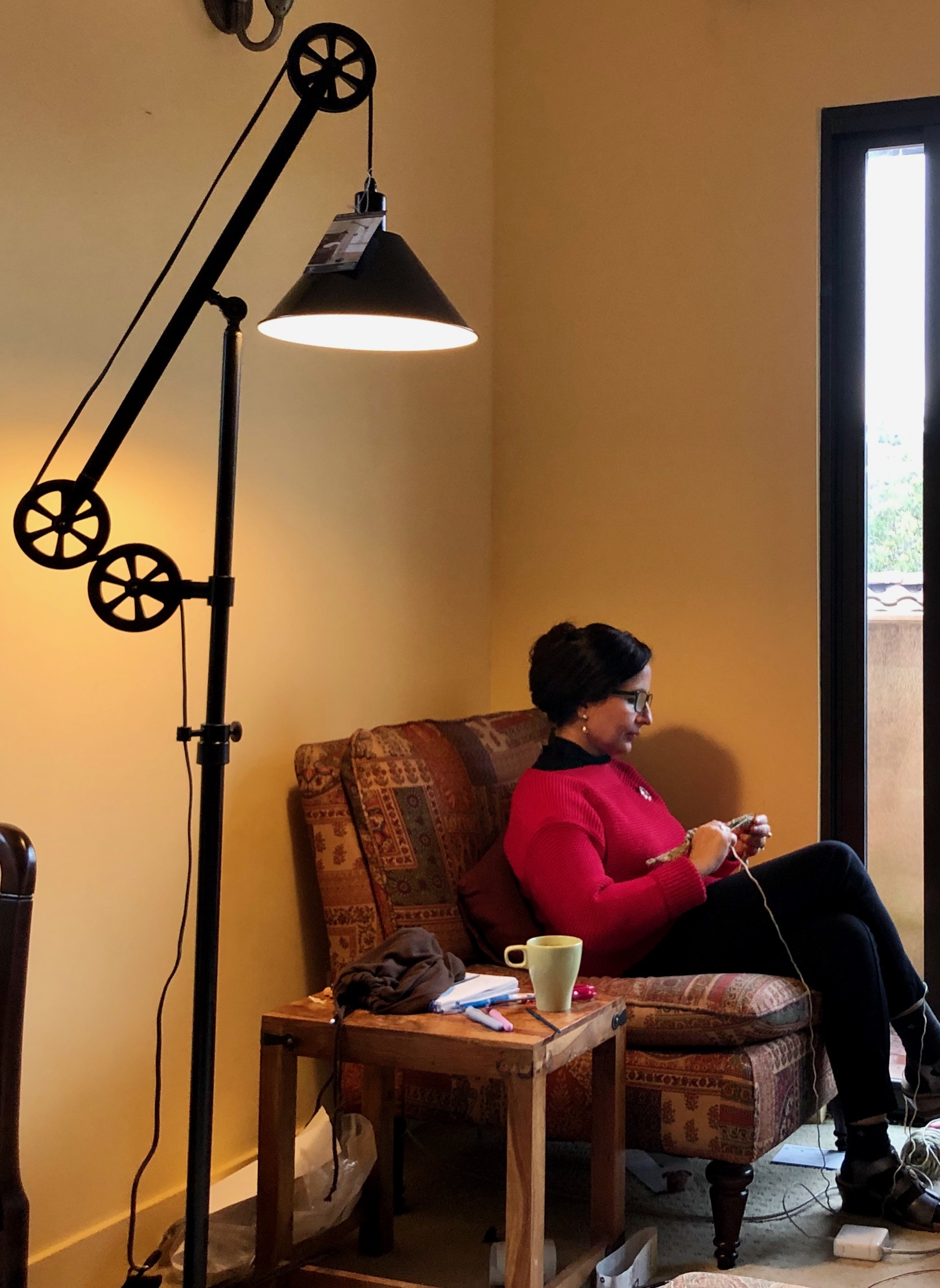 I learned knitting at my mother’s feet, quite literally. She was an avid knitter for most of her adult life. Now, in her 80s, she still knits and crochets, but is not nearly as fast and prolific as she was in decades past. Through the 56 winters since my parents were married in 1961 and until he passed away in 2017, my father only ever wore sweaters knitted by my mother. (Winters in North India can be quite harsh especially with no indoor heating). He took a personal interest in choosing the colors and patterns for his sweaters :). My sisters and I grew up wearing sweaters, cardigans, vests, scarves, gloves and mittens hand-knitted by my mom. This was pretty much the norm among others in my generation. Though I never knitted much myself (a plain stockinette stitch until I left home for college was my only big accomplishment), I’d sat and keenly observed my mother knitting and crocheting, and without really realizing it, had picked up most of the basics of the craft.
I learned knitting at my mother’s feet, quite literally. She was an avid knitter for most of her adult life. Now, in her 80s, she still knits and crochets, but is not nearly as fast and prolific as she was in decades past. Through the 56 winters since my parents were married in 1961 and until he passed away in 2017, my father only ever wore sweaters knitted by my mother. (Winters in North India can be quite harsh especially with no indoor heating). He took a personal interest in choosing the colors and patterns for his sweaters :). My sisters and I grew up wearing sweaters, cardigans, vests, scarves, gloves and mittens hand-knitted by my mom. This was pretty much the norm among others in my generation. Though I never knitted much myself (a plain stockinette stitch until I left home for college was my only big accomplishment), I’d sat and keenly observed my mother knitting and crocheting, and without really realizing it, had picked up most of the basics of the craft.
In November 2019, I injured my foot on my last trip to India. I returned to the US and was home bound for about 4-5 weeks and decided to indulge myself with some yarn on sale in pre-Black Friday deals, along with a set of crochet hooks. To my delight, I discovered that Youtube is a goldmine of tutorials for all kinds of crochet garments. I started with a poncho that I started and finished over one weekend, and was completely hooked (pun intended :-D)! I picked up some circular knitting needles as well and began knitting a sweater for my son. With that began what has been an ongoing obsession with knitting and crochet of all kinds.
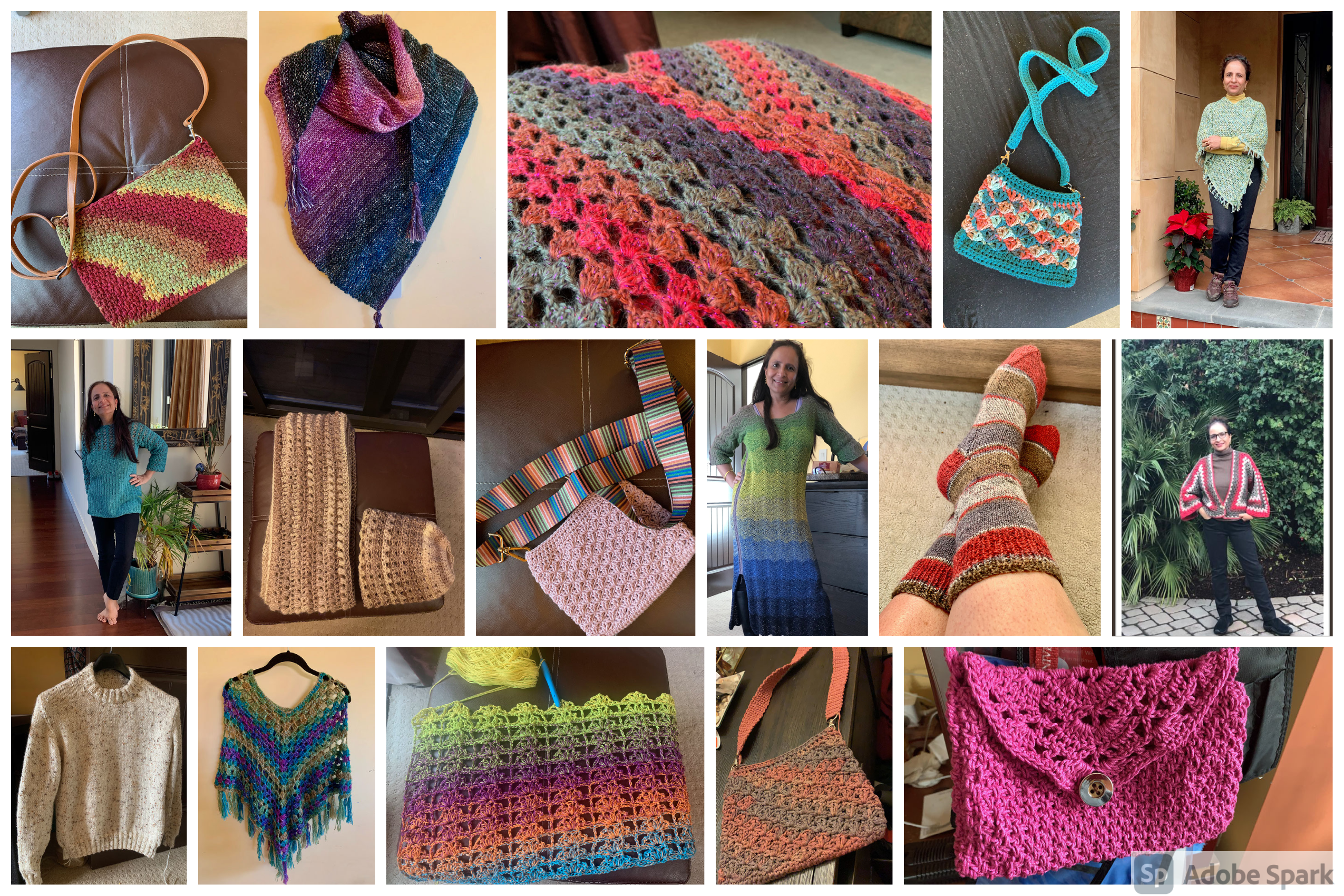 The pandemic with all its attendant isolation and stay-at-home orders has been a boon to the cause of building my craft. I have knitted or crocheted EVERY.SINGLE.DAY for the last 18 months. I have completely over a 100 projects — big, small and everything in between. The most elaborate crochet projects include 2 long evening dresses – one with a matching shrug and another with a matching stole (thin long shawl). I have gifted scarves and shawls to friends on their birthdays, I just completed a poncho for a cousin (by marriage) who lives across the Bay. What thrills me the most is that enthusiasm spilled over to my siblings and mom in India who spent this past winter crocheting scarves and toekins. (It’s too hot to knit or crochet in India outside of winter months).
The pandemic with all its attendant isolation and stay-at-home orders has been a boon to the cause of building my craft. I have knitted or crocheted EVERY.SINGLE.DAY for the last 18 months. I have completely over a 100 projects — big, small and everything in between. The most elaborate crochet projects include 2 long evening dresses – one with a matching shrug and another with a matching stole (thin long shawl). I have gifted scarves and shawls to friends on their birthdays, I just completed a poncho for a cousin (by marriage) who lives across the Bay. What thrills me the most is that enthusiasm spilled over to my siblings and mom in India who spent this past winter crocheting scarves and toekins. (It’s too hot to knit or crochet in India outside of winter months).
Apart from the difference in hardware (2 needles versus a single hook), personally I believe the two crafts, albeit related, are good for accomplishing different things. Knitting moves much slower and creates a closed weave unlike crochet. The latter is better for more lacy creations, requires more yarn (for a similar item, like a scarf), but moves along much faster. For things like sweaters and socks, I prefer to knit; for large projects like afghans, throws, shawls and ponchos, a crochet project would get done much sooner. For mid-sized projects stuff like scarves, one could go either way.
The beauty of these hobbies is that they lend themselves really well to multi-tasking. Ever single minute watching TV—movies, news, shows, what have you—I keep my hands busy with crocheting/knitting. During Zoom calls too, I prefer to look at my hands working the yarn rather than staring at my own or people’s faces (obviously not the case when I need to follow stuff on the screen). This may be hard to believe, but it concentrates the mind, and helps me focus on what people are saying. I carry my project with me on long car drives, and even when we meet friends (get-togethers this past year have been small and largely outdoor/socially distanced anyway).
Takeaway #3: Parents/Educators, get ’em started young, and you’ll give your kids/students a hobby, nay, a gift of joy and creativity that will last a lifetime.
Connecting knitting/crocheting to code and culture
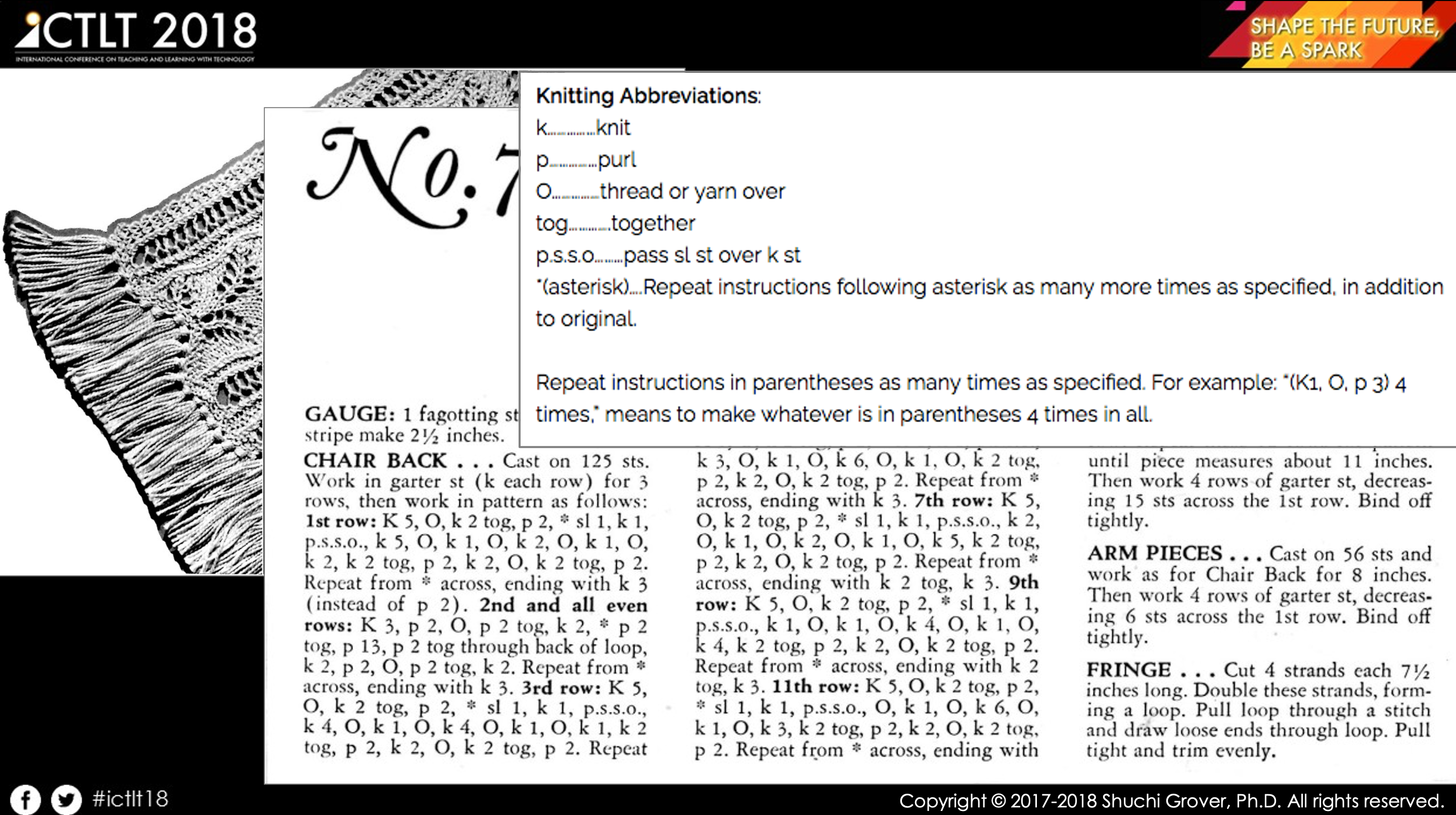 |
 |
Few non-programming activities have such a close parallels to coding as knitting/crocheting. As I mentioned in my keynote at ICTLT’18 in Singapore, knitting/crocheting have all the elements of programming (and also what we acknowledge today as elements of computational thinking). First, there are algorithms—algorithms represented in code using a defined syntax. It’s all about repeating patterns. There’s decomposition of a larger projects into subparts. There are subroutines. There’s debugging when you make a mistake. When you knit/crochet with your hands, it has all the elements except for automation. And because the rules for creating these are so algorithmic, there are now knitting machines that can enact those same algorithms to create—with greater speed and accuracy, what humans have and continue to create by hand. Those who code, can easily note and describe the parallels. Many coders who also knit have written about the similarities between these 2 skills. Research labs are now seriously investigating the math of knitting.
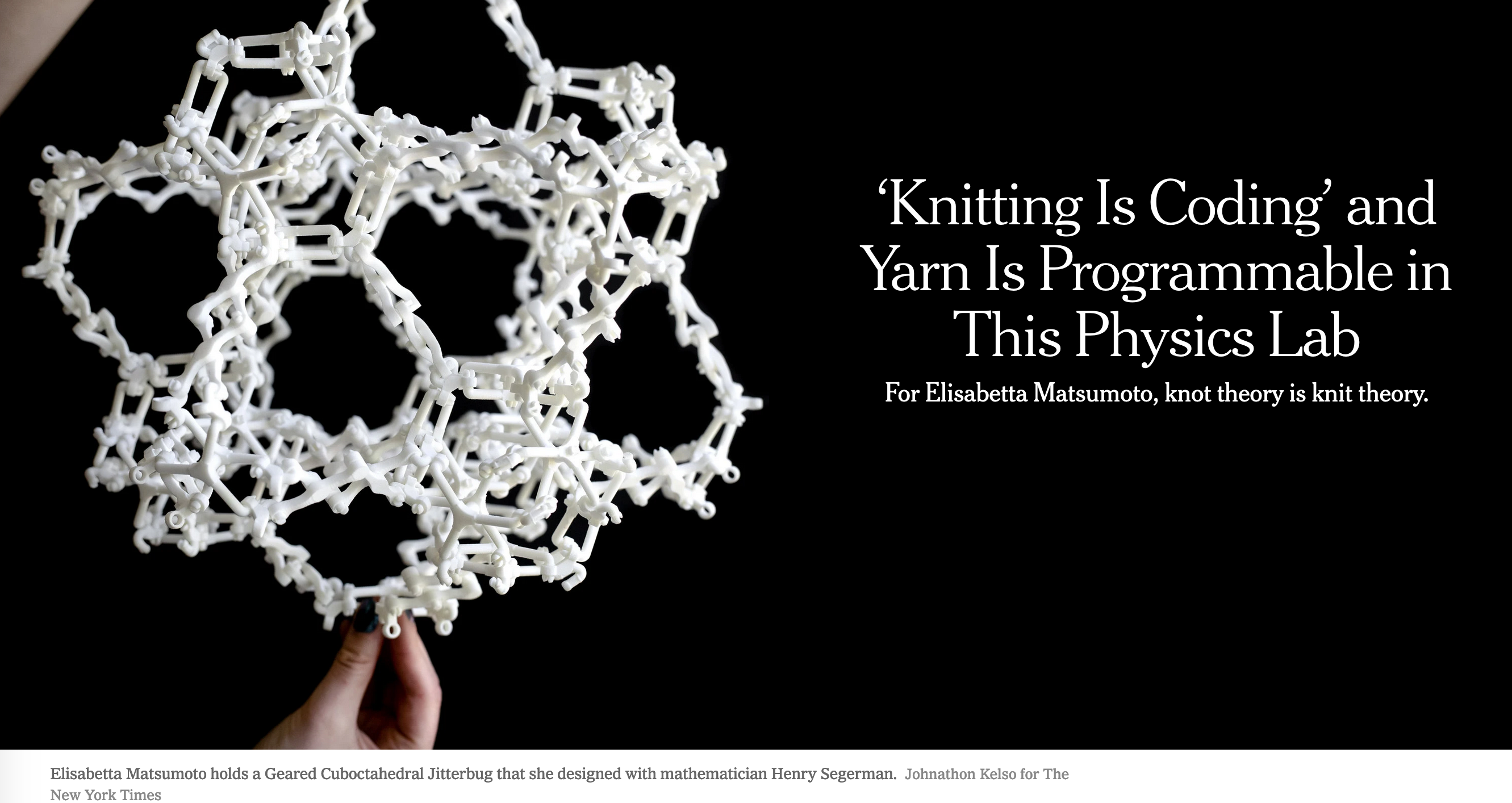 I would not be the first to have thinking about channeling the similarities between knitting/crocheting and coding to help students learn coding, or if knitting/crocheting can help students develop computational thinking skills. Knowing how learning works, I also recognize that skills are learnt and built in context, and transfer does not just happen. It’s obvious from the preceding sections that I see knitting/crocheting as valuable skills in their own right. They help connect to culture and promote well-being while also affording the sense of pride and joy that comes from creating artifacts, especially those that can be gifted and/or worn/used in various ways. However, I also believe that teachers can leverage the teaching of these crafts in the classroom with coding. And that can happen by drawing clear parallels between the two contexts and having students examine knitting patterns, observing the algorithmic structures, and convert them to pseudocode. See the sock knitting example below :-).
I would not be the first to have thinking about channeling the similarities between knitting/crocheting and coding to help students learn coding, or if knitting/crocheting can help students develop computational thinking skills. Knowing how learning works, I also recognize that skills are learnt and built in context, and transfer does not just happen. It’s obvious from the preceding sections that I see knitting/crocheting as valuable skills in their own right. They help connect to culture and promote well-being while also affording the sense of pride and joy that comes from creating artifacts, especially those that can be gifted and/or worn/used in various ways. However, I also believe that teachers can leverage the teaching of these crafts in the classroom with coding. And that can happen by drawing clear parallels between the two contexts and having students examine knitting patterns, observing the algorithmic structures, and convert them to pseudocode. See the sock knitting example below :-).
Takeaway #4: Use knitting/crocheting in the classroom not only to connect to craft and culture, but also to coding. Learning to knit will not mean that students will automatically find it easier to learn CT/coding. This can be done, however, by drawing clear connections between knitting/crocheting patterns and pseudocode/code as well as elements of computational thinking (algorithmic thinking decomposition, representation, pattern recognition, debugging). Have students convert a knitting pattern to pseudocode. Or knit something by looking not at a knitting pattern but at code/pseudocode.
Sock Knitting: A case in point
 Last winter I decided to finally take the plunge into knitting socks. Turns out socks
Last winter I decided to finally take the plunge into knitting socks. Turns out socks 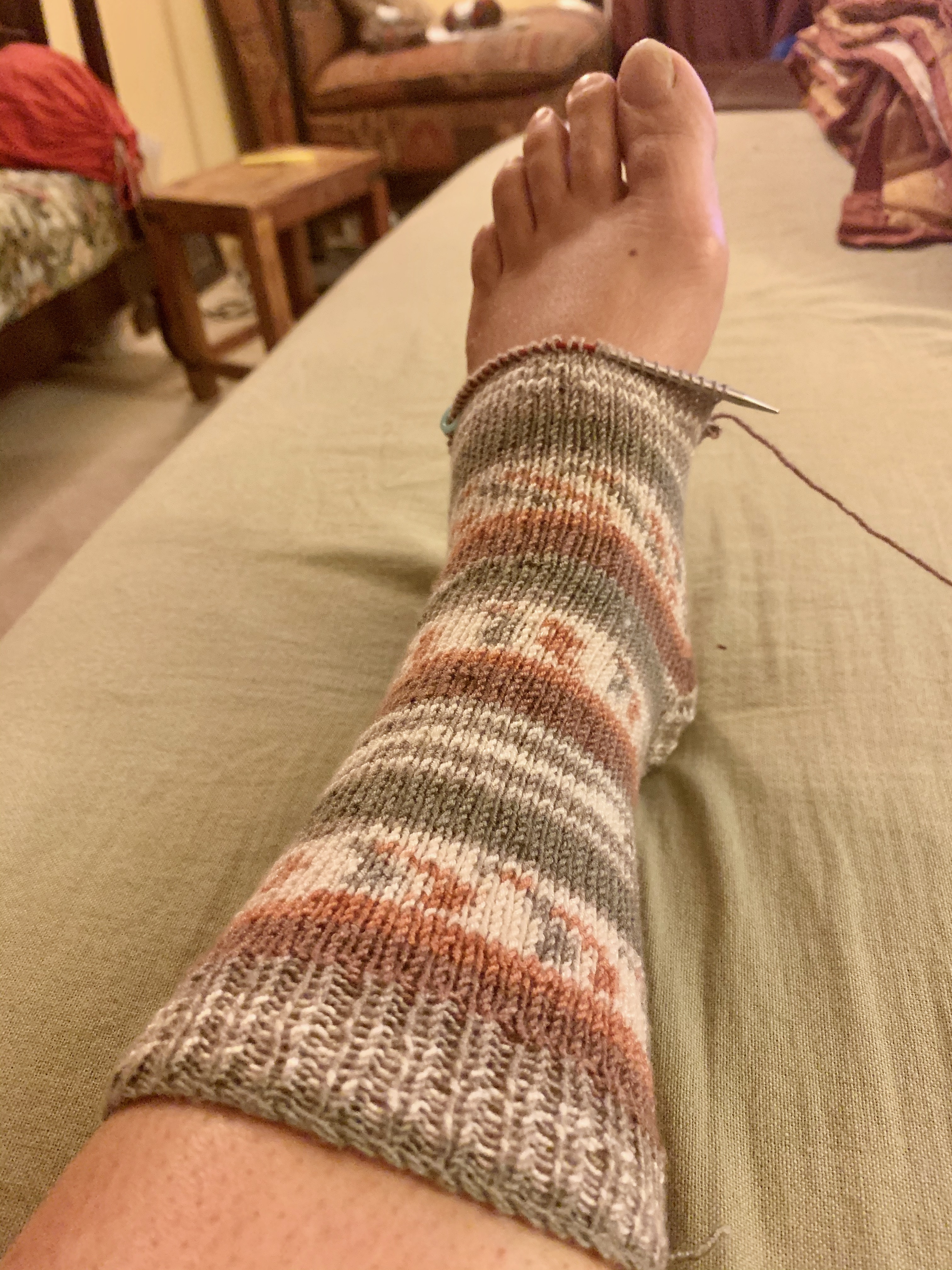 were among the first things humans knitted! A handy YouTube tutorial helped me successfully complete my first pair of socks—woolen, just in time for the short Bay Area winters.
were among the first things humans knitted! A handy YouTube tutorial helped me successfully complete my first pair of socks—woolen, just in time for the short Bay Area winters.
Knitting a sock from the cuff on down (see image on the right) is divided into 5 key subparts—the cuff and leg portion, heel flap, heel turn, gusset, foot portion and final shaping for toes. By the far the most intriguing and magical part of knitting socks is knitting the heel (divided into two parts, the heel flap and heel turn). The instructions are simple (which kind of adds to the magic of accomplishing something so seemingly complex through a set of fairly simple instructions.) Both instructions involve a set of repeating instructions, and can easily be thought of in the form of loops in programming. The heel flap is a rectangle 2-row (knit/purl) repeat pattern; however, the heel turn is through accomplished a “growing” pattern which would require a variable that increases in value with each iteration until you’ve got the required number of stitches on the needle.
As seen in the images below, students could convert the knitting pattern for the heel flap and heel turn into pseudocode or even create the code in Scratch, using system-provided blocks and control structures as well a custom blocks.
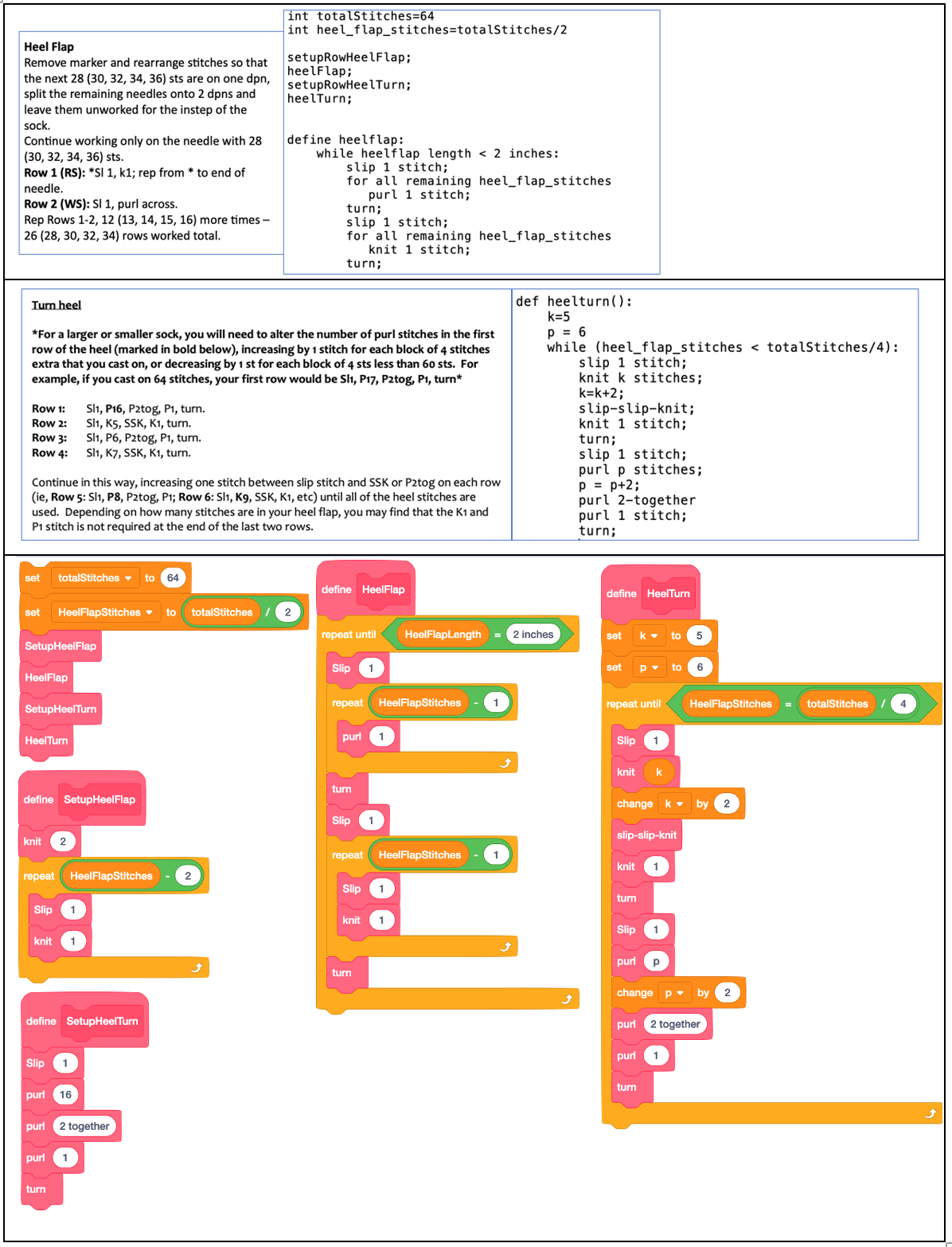
Takeaway #5: For all the reasons outlined in this article; and for the fact that knitting and crocheting have seen a resurgence in this century after falling out of favor in the 20th century (and especially during the pandemic), I hope folks will be inspired to order some yarn and needles/hooks, and take the plunge into knitting/crocheting. I also hope parents will encourage their children to give this superbly calming hobby a try, and that teachers will bring these hobbies into the classroom, and perhaps explore with their students the intersection of craft, culture and coding.




